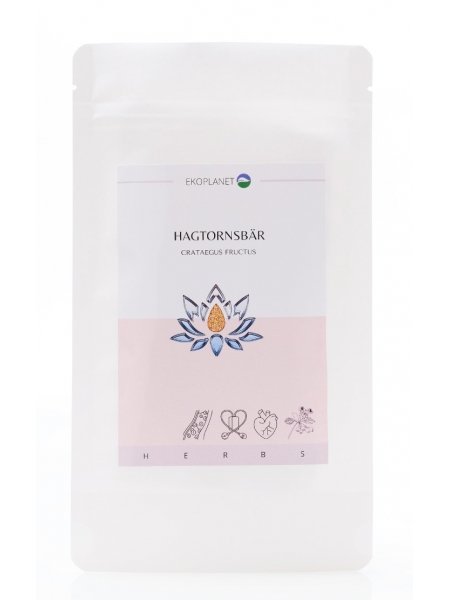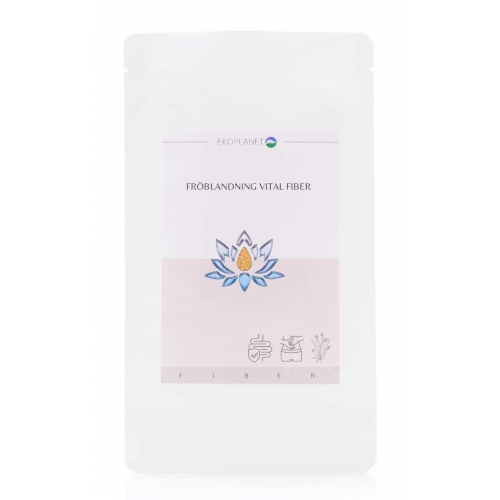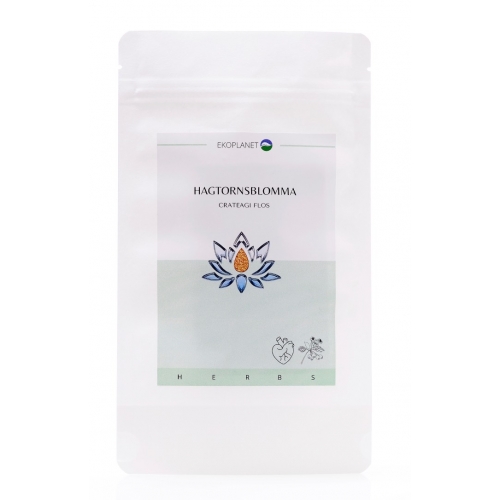Hawthorn berries - Crataegus fructus 100 g
Hawthorn (Crataegus ) is a shrub with many species and is native to Europe, North America and East Asia. Often used in the kitchen - not only because of its properties, but also because of its unique taste and aroma. The plant is a veritable treasure trove of valuable organic substances and minerals. The herb is rich in healthy carbohydrates, fibre, protein and organic acids.
Comparative price: SEK 490/kg
Hawthorn occurrence
Hawthorn is a unique plant (not to be confused with sea buckthorn which is a completely different species in the plant kingdom!) with many species and is native to Europe, North America and East Asia. Grows in meadows, parks and streets. In spring, the hawthorn is covered in white flowers, and in autumn, clusters of ripe red berries hang from its branches.
Hawthorn - a magical plant
Plants have always attracted people's attention. Some plants became almost symbolic and even acquired an aura of mystery and magic. Hawthorn was definitely one of those plants. It was considered to have great power and strength. The thorns that cover its branches would protect against the evil forces such as demons or witches. The hawthorn was also a symbol of love and death. People believed that hawthorn had the power to separate the living from the dead so it was planted near graves. The hawthorn was also a symbol of hope, it was believed to be a cure for a broken heart and in Britain and Ireland there is a popular superstition that picking and destroying hawthorn bushes is bad luck.
Hawthorn uses
In addition to its ornamental value, hawthorn has many other uses. Hawthorn was formerly used as a hedge plant and the hard wood was used to make tools, handles and walking sticks.
Hawthorn is often used in the kitchen - not only because of its properties, but also because of its unique taste and aroma. Hawthorn berries, flowers and leaves are edible, the dark green, spiky leaves can be added to salads, for example.
The culinary uses of hawthorn berries mainly include preserves, jams, juices, jellies, teas, tinctures and hawthorn sweets.
Hawthorn can also be used in various kinds of drinks. It works, e.g. make an aromatic tea with honey and possibly some warm milk. Hawthorn also goes well in a summer cocktail with cane sugar, lemon slices and mineral water. Hawthorn also works well in chicken and seafood dishes. Place a couple of sprigs in the baking dish or pot and remove them before serving.
Hawthorn active substances
Hawthorn is a valuable plant with many organic substances and minerals. The herb contains healthy organic acids, protein, fibers but also carbohydrates. The most important minerals include: sodium, potassium, phosphorus, magnesium and calcium and in smaller amounts: chromium and iron. Hawthorn is also rich in vitamin C. However, the most important are polyphenols and flavonoids that help protect cells against oxidative stress.
Does hawthorn have side effects?
There are no serious side effects of hawthorn reported, but it is worth following a simple rule - what is too much is unhealthy. Consuming too much hawthorn in various forms can lead to indigestion. Excessive consumption of tea and hawthorn preparations can cause dizziness and headache, drowsiness and palpitations.
Because of the plant's effect on the circulatory system, people suffering from heart disease and high blood pressure should consult a specialist before using this herb.
Ingredients: Hawthorn berries 100%
Dosage: Infusion- 2 teaspoons of hawthorn berries in a glass of boiling water, let it steep, covered for 20 minutes. Drink 3 times a day.
Hawthorn berries can also be used in the kitchen.
Storage: Store dry and cool.
ATTENTION!
Do not use during pregnancy and breastfeeding and in case of hypersensitivity to any of the ingredients in the product.














